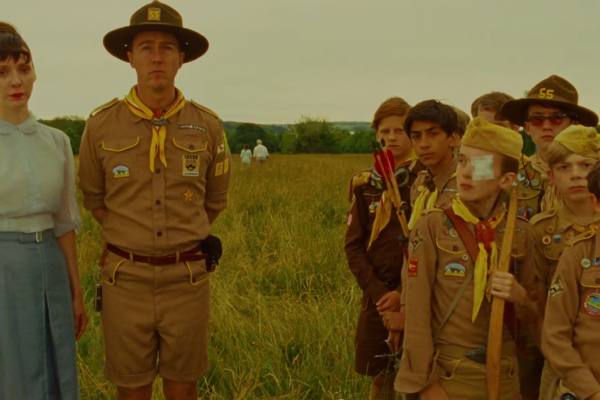Actor and writer Dylan Marron is the creator of Every Single Word, a popular tumblr and video series dedicated to exposing the lack of racial diversity in mainstream Hollywood films.
For the series, Marron, a biracial native of Venezuela best known for his work on the cult-favorite podcast Welcome to Night Vale, chooses a well-known, recent film and edits it down to only the lines spoken by people of color. The results are damning. None of the videos in Marron’s series last over a minute. Some, like Noahand Into the Woods, which feature no actors of color at all, simply cut directly to black.
Marron spoke with Sojourners about the origins of the project, the long-term effects of poor diversity representation onscreen, and systemic struggles facing people of color in the entertainment industry.
Abby: What prompted you to start this series?
Marron: There were a lot of reasons. As a kid, I didn’t see anyone who looked like me (in films or T.V.) except for specific types of roles. And when you see that, you internalize it, and you assume that you have no voice. Since I’ve been a working artist, I’ve had agents tell me that there aren’t that many roles out there for me, and I realize that it doesn’t have to do with ability, but that it has to do with being a person of color. So I did the series to highlight this — with no embellishments or hyperbole, just the truth — and then to let people draw their own conclusions.
Abby: Because I love film, I recognize that many of my personal experiences are filtered through movies I’ve watched. As a white person, I’ve been privileged to see myself represented in much of what I see. As a person of color, how is that experience different when you don’t see other people of color represented on film?
Marron: (People are) such social creatures that we want to see ourselves reflected in what we see, even when those reflections don’t look like us. So, you start to worry about your appearance. For me, it wasn’t all that drastic apart from, "what pharmacy-related products are available to make me look different?" But I was trying to change who I was, and that can get really dangerous. If I only watched movies, I would assume that only pretty white people could fall in love, and occasionally, maybe black or brown people can fall in love.
Abby: In a recent article, your series drew a comparison to the Bechdel Test, which is a popular way to measure representations of women on film. If you were to create a similar test for people of color represented on film, what would that look like?
Marron: When you isolate the words spoken by people of color, are you be able to understand anything about the overall story? Do the characters of color ever speak in the first person about feelings or emotions that they are experiencing or have experienced? Are most of the characters of color given names or are they credited as their role in the story (i.e. "Man At Airport" or "Letter Writer # 2")? Does the isolated dialogue last five minutes or longer? If yes to all of these, then they pass.
Abby: What are some systemic changes that the industry can make to encourage people of color at various creative levels, and diversify both roles that are offered to people of color, and the people who create those roles?
Marron: People of color can get such a heavy "no" from the outset that they get scared off. One way to change things is internships. The film industry is built on internships, and those can be selective and elitist, since the people that can afford to work for little or no pay in a situation like that are people whose parents can support them, and those tend to be white kids, or, sometimes, people of color who have that support system, or are just willing to stop at nothing, and those people are rare and wonderful birds.
It also means improvements in arts education, and who has access to that, and who gets encouragement. When creativity is seen as a "white people thing," it means we don’t get the representation or the creators that we need.
Abby: Are there ways that audiences can work to encourage people of color at various creative levels?
Marron: Just like everything else, you vote with your dollar. Go find creators who aren’t just white guys. There are huge pockets of new talent out there online, in film festivals, in short films and web series. So go seek that stuff out, and still hold on to your standards. As moviegoers, we want good stories, and good stories don’t have to come from white guys. They can come from anywhere.
Got something to say about what you're reading? We value your feedback!

